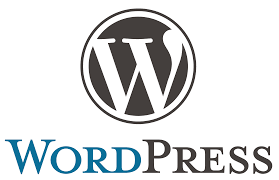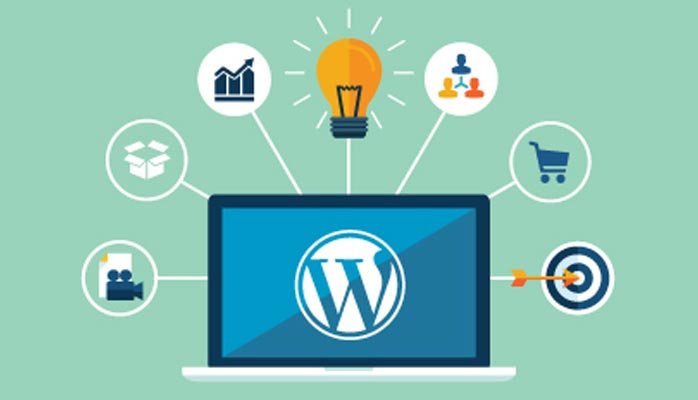Welcome to the Get to Know WordPress Tutorials! In this series of tutorials, we will explore the basics of WordPress and learn how to create and manage a WordPress website. WordPress is an incredibly powerful and versatile website platform, and with this series of tutorials, you will be able to get up and running with a WordPress website in no time. So let’s get started!
A. What is WordPress?
WordPress is an open-source content management system (CMS) used to create websites and blogs. It is an incredibly popular platform that is used by millions of users around the world. WordPress is easy to use, highly customizable, and offers a wide range of features and tools that make creating a website or blog simple and enjoyable. WordPress is also free to use and has an extensive library of free and premium themes and plugins that allow users to extend the functionality of their websites. Whether you are a beginner just getting started with web design or a seasoned professional, WordPress has something for everyone.
B. Benefits of Using WordPress
WordPress is one of the most popular content management systems (CMS) available today. It is an open source platform, which means it is accessible to anyone and free to use. It is a great choice for businesses and individuals who want to create a website or blog quickly and easily. There are many benefits to using WordPress, including its user-friendly interface, versatility, scalability, and security.
The user-friendly interface of WordPress makes it easy to get started, even for those who are new to web development. It allows users to customize their website without the need for technical knowledge, and you can create professional-looking websites without any coding.
WordPress is also highly versatile, allowing users to create all types of websites, from blogs to e-commerce stores. It is also highly scalable, meaning it can grow with your business and is suitable for both small and large websites.
WordPress is also secure, with regular updates to keep your website safe from malware and hackers. It is also SEO-friendly, which means it can help you to rank higher in search engine results.
Overall, WordPress is a great choice for anyone looking to create a website or blog quickly and easily. With its user-friendly interface, versatility, scalability, and security, it can help you to create a professional-looking website that will help you to reach your goals.
II. Getting Started with WordPress Tutorials
Getting started with WordPress can seem a bit overwhelming for beginners – but it doesn’t have to be! There are a variety of tutorials and resources available to help you get up and running in no time. Whether you’re setting up a blog, website, or online store, WordPress is a great way to get started.
To get started, start by downloading the WordPress software and installing it on your server. Once that’s done, you can start customizing your site with themes and plugins. There are a huge range of both free and paid themes and plugins available, so you can find something to suit your needs.
If you’re new to WordPress, there are many beginner-level tutorials available to help you get started. These tutorials will help you understand the basics of WordPress, such as how to create posts and pages, how to install and configure plugins, and how to customize your site’s design.
If you’re looking for more advanced tutorials, there are a range of tutorials available for topics such as creating custom post types, developing your own themes and plugins, and integrating with third-party services. There are also tutorials for more advanced topics such as creating APIs and working with the WordPress REST API.
With a little bit of time and effort, you can quickly become an expert with WordPress. So dive in and start exploring – you’ll be amazed at what you can do with WordPress!
A. Choosing a WordPress Theme
Choosing a WordPress theme for your website can be a daunting task. With so many options, it can be hard to decide which one is the best fit for your needs. Whether you’re looking for a blog theme, an eCommerce theme, or a portfolio theme, you’ll want to make sure you’re selecting the one that’s right for you.
First, consider what type of website you’re creating. Are you creating a blog, an ecommerce store, or a portfolio site? Each type of website requires a different type of theme and functionality. You’ll want to make sure you’re selecting a theme that is suitable for the type of website you are creating.
Next, consider the features you need. Do you need a theme with a drag and drop page builder? Do you need a theme with multiple column layouts? Do you need a theme with a mobile-friendly design? Make sure you select a theme that has the features you need to make your website successful.
Finally, consider the look and feel of the theme. You want to make sure the theme you select is visually appealing and reflects the style and tone of your website. You’ll also want to make sure the theme is compatible with your WordPress version so you don’t run into any compatibility issues.
Choosing a WordPress theme can seem like a daunting task, but with a little research and some careful consideration, you can find the perfect theme for your website.
B. Creating a WordPress Website
Creating a WordPress website can be a great way to get your business or personal website up and running quickly and easily. WordPress is an open-source content management system (CMS) that is popular for creating websites and blogs. It is easy to use and can be customized with themes and plugins, allowing you to create a website that looks and functions the way you want it to.
To get started, choose a domain name and hosting provider. This will be the address of your website and the place where all your files will be stored. Once you have chosen your domain and host, you can install WordPress on your server. You can do this manually or use the one-click install option offered by some hosting companies.
Next, you will need to select a theme for your website. WordPress themes are pre-designed templates that allow you to customize your website’s appearance. They come in many different styles, so take some time to browse the options and choose the one that best suits your needs.
Once you have the theme installed, you can begin adding content to your website. WordPress makes it easy to create posts, pages, galleries, and more. You can also install plugins to add extra features and functionality to your website.
Finally, once your website is up and running, it’s important to keep it secure. WordPress is regularly updated with security patches, so make sure you are running the latest version. It’s also a good idea to use a strong password and install a security plugin to protect your website from malicious attacks.
Creating a WordPress website is a great way to get a website up and running quickly and easily. With the right domain name, hosting provider, theme, and plugins, you can create a website that looks and functions the way you want it to.
III. Understanding WordPress Basics
WordPress is one of the most popular content management systems (CMS) today. It is used by millions of people around the world to create websites, blogs, and other forms of content. Understanding WordPress basics is important for anyone who wants to create and manage their own website or blog.
WordPress is free and open source software that can be downloaded and installed on any web server. It is written in PHP and uses a MySQL database to store content. WordPress is highly customizable and can be extended with themes and plugins to create anything from a simple blog to a complex eCommerce store.
WordPress also has a wide range of features that make it easy to use. It has an intuitive user interface, powerful content editor, and a range of tools that make it easy to manage content, optimize for search engines, and more. With WordPress, you can also create custom post types and taxonomies to organize content into different categories.
Understanding WordPress basics is essential for anyone who wants to create and maintain a website or blog. With its user-friendly interface, powerful content editor, and wide range of features, WordPress makes it easy to create and manage content. So if you’re looking to get started with a website or blog, WordPress is an excellent choice.
A. Managing Content
Managing content in WordPress is an essential part of running a successful website. WordPress is a powerful content management system that allows you to create, edit, and publish content with ease. With WordPress, you can create content quickly and efficiently, and have it published on your website in no time.
One of the most important aspects of managing content in WordPress is organizing your content. This entails making sure that all of your content is properly organized and tagged, so that it can be easily located and accessed by visitors. WordPress also allows you to create categories and tags, to further organize your content.
Creating content in WordPress is easy. The WordPress editor allows you to create posts and pages quickly and easily. You can also use plugins to enhance the functionality of the editor, and add features such as forms, galleries, and videos.
Managing content in WordPress also involves managing users and permissions. This allows you to control who can access and edit your content, and what level of access they have. This helps to ensure that your content is secure, and only those you authorize can access it.
Finally, managing content in WordPress also involves ensuring that your content is optimized for search engines. This involves making sure your content is keyword-rich, and using plugins to ensure that your content is properly indexed and ranked in search engine results.
Managing content in WordPress is an essential part of running a successful website. With WordPress, you can create, edit, and publish content quickly and easily, and ensure it is properly organized and optimized for search engines.
B. Working With Plugins
Working with plugins on WordPress is a great way to customize your website and add functionality. Plugins are small pieces of software that add features to your site, such as contact forms, shopping carts, and more. Installing and managing plugins can be a bit tricky, but once you get the hang of it, it can be a breeze.
The first step to working with plugins is to find the right ones for your site. WordPress has an extensive plugin directory that you can use to search for the type of plugin you need. Once you’ve found the plugin that’s right for you, you can install it directly from the WordPress dashboard.
Once you’ve installed the plugin, you can configure it by going to the plugin settings page. Here, you can set up the plugin to meet your needs. Depending on the plugin, you may be able to set up options such as colors, sizes, and more.
Once you’ve configured the plugin, you can start using it on your site. Some plugins require you to embed code on your site, while others are completely automated.
Finally, if you ever need to make changes to the plugin, you can easily do so in the plugin settings page. This makes it easy to keep your plugins up to date and running smoothly.
Working with plugins on WordPress can be a great way to customize your website and add valuable features. With a bit of research and some trial and error, you can easily find the right plugins for your site and get them up and running in no time.
C. Understanding Widgets
Widgets are an integral part of every WordPress website. They are small pieces of code which can be added to your website’s sidebar and footer to add extra features and functionality. Widgets enable you to display content such as images, text, links, and more in a visually appealing way.
Not only do widgets make your website look more attractive, but they also provide you with the opportunity to add useful features such as a search bar, a social media sharing buttons, or a contact form. Widgets are also a great way to promote your content and products.
You can easily add, remove, and edit widgets on your website with just a few clicks. WordPress also offers a wide selection of pre-made widgets for you to choose from, including those for navigation, content, and other features.
Understanding how to use and customize widgets on your website is an important part of mastering WordPress. With a bit of practice, you can create a beautiful and functional website in no time.
IV. Advanced WordPress Tutorials
Advanced WordPress Tutorials can be an invaluable resource for any website owner looking to take their WordPress website to the next level. With the help of advanced tutorials, you can learn how to create custom themes and plugins, optimize your site for search engine optimization (SEO), and even create custom post types and taxonomies. With advanced tutorials, you can also learn how to create powerful ecommerce sites, and how to build custom forms and pages.
Advanced WordPress Tutorials can help you develop a comprehensive understanding of WordPress and its capabilities. You can learn how to create custom themes and plugins, optimize your site for SEO, and even create custom post types and taxonomies. Additionally, you can learn how to create powerful ecommerce sites, and how to build custom forms and pages.
With advanced tutorials, you can learn how to use WordPress in a variety of different ways. For example, you can learn how to create powerful ecommerce sites, and how to create custom forms and pages. Additionally, you can learn how to maximize the use of WordPress features, such as custom post types and taxonomies, and how to optimize your site for SEO. Advanced tutorials can also help you to create secure and reliable WordPress websites, and can teach you how to take advantage of the latest features and technologies.
By taking advantage of advanced WordPress Tutorials, you can gain a comprehensive understanding of how to use WordPress to its fullest potential. With the help of these tutorials, you can create a powerful and successful website that is optimized for SEO, and can take advantage of the latest features and technologies.
A. Using Themes and Templates
WordPress is a popular content management system (CMS) used by many businesses and individuals to create and manage their websites. One of the key features of WordPress is its ability to use themes and templates to customize the look and feel of a website. Using themes and templates can be a great way to quickly create a website with a professional design that suits your needs.
Themes provide users with a wide range of design options, from simple to complex. Templates are pre-built page layouts which allow users to quickly add content and customize the look of their site. Both themes and templates can be used to customize fonts, colors, backgrounds, navigation menus, and more.
WordPress themes and templates can also help create a consistent look and feel across different pages of a website. This can be particularly useful for businesses that need to maintain a consistent brand identity across their website. Additionally, using themes and templates can help speed up the website development process, as they provide a starting point for users to quickly build a website.
Using themes and templates is a great way to get started with your website. They provide users with the tools they need to create a professional-looking website quickly and easily. With a wide range of themes and templates available, anyone can find something that suits their needs.
B. Building Custom Pages

WordPress is a great platform for creating custom pages. With its easy-to-use interface, you can quickly create pages that are tailored to your needs. Whether you want to create a page for your business, a personal website, or a blog, WordPress makes it easy.
To begin building custom pages with WordPress, first select the type of page you’d like to create. WordPress has many different page types to choose from, including landing pages, sales pages, blog pages, and more. Once you have decided on the type of page you would like to create, you can then begin to customize the look and feel of the page.
You can customize the page design using the WordPress theme system. You can choose from a variety of free and premium themes that are available for WordPress. Themes allow you to customize the look of the page, so you can create a page that is tailored to your needs.
Once you have chosen a theme, you can then begin to customize the page’s content. WordPress allows you to add text, images, videos, and other content to the page. You can also add plugins and widgets to the page, which can add additional features and functionality.
Finally, when you’re finished building your custom page, you can then preview it in WordPress. This will give you a chance to see how the page looks before you make it live. Once you’re happy with the page, you can then publish it and make it available to the public.
Creating custom pages with WordPress is easy and can be a great way to showcase your business, personal website, or blog. With the custom themes and plugins available, you can create a page that is tailored to your needs. So, if you’re looking to build a custom page, then WordPress is a great platform to use.
C. Optimizing for SEO
WordPress is one of the most popular and powerful content management systems available today. It’s also one of the most SEO-friendly platforms for website optimization. By utilizing WordPress’s built-in SEO features, you can ensure that your website is always up to date with the latest search engine best practices and standards.
To optimize your WordPress website for SEO, you should start by making sure your website’s structure is optimized for search engine bots. This means that you should create a logical hierarchy of pages, use descriptive titles and meta descriptions for each page, and have a sitemap that is easily accessible. Additionally, you should also use the best practices for site speed optimization, such as compressing images, using caching plugins, and minifying HTML, CSS, and JavaScript.
You should also ensure that all of your content is optimized for SEO. This includes using keywords in titles and headings, as well as having content that is easy to read and navigate. Additionally, you should also ensure that your content is up to date and relevant.
Lastly, you should also use WordPress plugins to further optimize your website for SEO. SEO plugins such as Yoast and All in One SEO Pack are great tools for managing and optimizing your website’s SEO.
By utilizing WordPress’s built-in SEO features, you can ensure that your website is always up to date with the latest search engine best practices and standards. With a little bit of effort and the right tools, you can easily optimize your WordPress website for SEO and ensure that it is well-positioned to appear in the top results of search engine rankings.
V. Final Thoughts on WordPress Tutorials
The journey of learning WordPress can be daunting at first, but with the right tutorials, it can be an enjoyable and rewarding experience. With so many tutorials available on the internet, it can be difficult to know which ones to trust and follow. However, with the right guidance, you can learn how to use WordPress to create amazing websites and blogs. Whether you are a beginner or an experienced user, WordPress tutorials are an essential tool for mastering this powerful software. From learning how to install and configure WordPress to creating custom themes and plugins, WordPress tutorials provide a comprehensive guide to mastering the platform. With the right tutorials, you can be sure to get the most out of your WordPress experience.
A. Resources for Learning WordPress
Learning WordPress can be an intimidating task, especially for those who are not very tech-savvy. Fortunately, there are a number of resources available to help you get started. Whether you’re a beginner looking to get your feet wet with WordPress or a seasoned user looking to brush up on the latest features, there are plenty of online resources available to help you along the way.
For beginners, there are a variety of online tutorials and courses that can help you understand the basics of WordPress. From creating a website to installing themes and plugins, these courses can guide you through the entire setup process. Additionally, there are plenty of online forums and communities for WordPress users to ask questions and get help from other users.
For experienced WordPress users, there are a variety of resources available to help you stay up-to-date and take advantage of all the new features. From blogs to podcasts to online courses, there are plenty of ways to keep up with the latest and greatest in WordPress. Additionally, there are a number of websites dedicated to WordPress development and customization that can help you get the most out of the platform.
No matter what your skill level is, there are a variety of resources available to help you get started with WordPress or take your skills to the next level. From online tutorials to forums to specialized sites, there’s no shortage of ways to learn more about WordPress and become a pro.
B. Tips for Success with WordPress
WordPress is one of the most popular content management systems on the web, and for good reason. It can help you create a professional website in no time and with minimal effort. However, to make the most of WordPress, there are some tips you need to keep in mind. Here are some tips for success with WordPress:
1. Choose the Right Theme: The right theme will allow you to create a visually appealing website that resonates with your target audience. Make sure to choose a theme that is responsive, SEO friendly, and easy to customize.
2. Utilize Plugins: WordPress plugins can extend the functionality of your site and help you create a more user-friendly experience. Popular plugins include Yoast SEO, Akismet, and Jetpack.
3. Keep it Secure: Security should be a top priority when running a WordPress website. Make sure to use strong passwords and update WordPress and your plugins regularly.
4. Optimize Your Content: SEO is essential for your WordPress website. Make sure to use keywords within your content and optimize your images with descriptive titles and alt tags.
5. Monitor Your Analytics: Analytics can help you understand how people are interacting with your website. Use Google Analytics to track your website’s performance and make improvements.
By following these tips, you can ensure your WordPress website is successful. Good luck!
In conclusion, WordPress tutorials are a great way to get to know how to use the WordPress platform and create amazing websites. With a wide range of tutorials available, you can learn the basics of WordPress, customize themes, use plugins, and more. With the help of these tutorials, you can unlock the potential of WordPress and create stunning websites that can help you to reach your goals.













